#Seminole war
Explore tagged Tumblr posts
Text
270 people dead in an instant at "Negro Fort"

Readers: Boom! A red-hot cannonball, shot from the middle of the Apalachicola River, slammed into a sprawling fort full of Indians and runaway slaves. In a flash, 270 people died.
Here’s more about this tragedy with help from Dale Cox, author of The Fort at Prospect Bluff.
The bluff, on a slow curve 20 miles north of the Gulf of Mexico, offers a clear view up the half-mile-wide Apalachicola, a major artery through the South two centuries ago. Whoever would control this piece of land would control shipping along the river.
The tragedy of the "Negro Fort" stemmed from a multinational tug-of-war for the Spanish-held territories of West Florida and East Florida.
In 1815, during the War of 1812, the British, at war with America, built a fort with bastions 15 feet high and 18 feet thick as a base to recruit escaped slaves and Indians. A year later, the British abandoned it, leaving artillery and military supplies. Blacks and Indians stayed.
About 5 a.m. on July 27, the gunboats carrying Clinch and his men could see the Union Jack and a red flag called "the bloody flag'' - a universal sign of no surrender. From inside, a 32-pound cannonball flew toward the Americans. Clinch returned fire. He launched four cannonballs and fired shots - cannonballs heated red hot for maximum carnage. The first one hit the ammunition pile.
"The explosion was awful and the scene horrible beyond description," Clinch wrote later.
In 1818, during the First Seminole War, Jackson, again, went downriver on a search-and-destroy mission for Seminole villages. He instructed Lt. James Gadsden to build a fort where the former British fort had been. He named it for Gadsden who held the fort despite Spanish protests until Spain ceded Florida to the United States in 1821. It was mostly forgotten until the Civil War; Confederate troops occupied it until driven out by malaria.
The fort then fell to neglect. The state took charge of 78 acres in 1961 to create Fort Gadsden State Park. It later came under the management of the U.S. Forest Service and was renamed Prospect Bluff Historic Sites.
#Florida History: 270 people dead in an instant at “Negro Fort”#Negro Fort#prospect bluff#fort gadsden#Apalachicola River#seminole war#first seminole war#civil war#spanish#Black history in florida
2 notes
·
View notes
Photo





(via This is the true reason for the Seminole Wars in Florida)
5 notes
·
View notes
Text
so i went to a native plant giveaway last night and i walked away with two plants, coontie (zamia integrifolia) and american beautyberry (callicarpa americana)


not my pictures but this is what they will look like when they get big lol.
the beautyberry is showier but i am honestly more excited for the coontie because it's a really cool plant. it's been growing in florida since the mesozoic era and in spite of the plant being almost entirely toxic, it was a staple food source for florida's indigenous peoples. they figured out how to process the roots and used it to make a bread-like food.
when settlers figured out the process, it lead to the over harvesting of coontie. the atala butterfly, whose larva are entirely dependent on coontie as a food source, came close to extinction. coontie is federally recognized as a near threatened plant and it is illegal to harvest it in the wild. it's become a very popular landscaping plant and both coontie and the atala butterflies are bouncing back.
i'll need more than just one plant to make a habitat for the atala butterflies but for now, i can dream....

atala butterfly if you even care.....
#i will not apologize for yapping about plants#i have also heard tales about the seminoles using improperly prepared coontie to poison settlers during the seminole wars#which would be epic if true but i couldn't find anything to support that#so oh well....
4 notes
·
View notes
Text
damn i’ve never had an unimportant opinio i’ve been more pissed about
A STORY ABOUT THE FALL OF DEMOCRACY AND RISE OF FASCISM ISNT AT ALL EQUIVALENT TO AN AUTOCRAT BECOMING A RELIGIOUS AUTOCRAT! THE VIEW OF POLITICS AND SOCIALITY AND COMMUNITY ARE COMPLETELY DIFFERENT! THE FORCE AS A MORAL AND MAGIC SYSTEM IS INCOMPARABLE TO ANYTHING IN DUNE!
If you end your Star Wars understanding with the movies sure I guess, by the Revenge of the Sith Novelization is one of the most poetic and tragic political-love story I’ve ever read. Comparing Feyd to Maul because they’re… angry and bald? Im struggling to get how one of the most eloquent Sith we meet correlates to this fuck.
Plagueis is a political novel on the same scale as Dune, with a far more rich, compelx and well developed universe. Dune is soft Sci-Fi and while a lot of it is really well developed, you can FEEL its gaps in a way you can’t with star wars



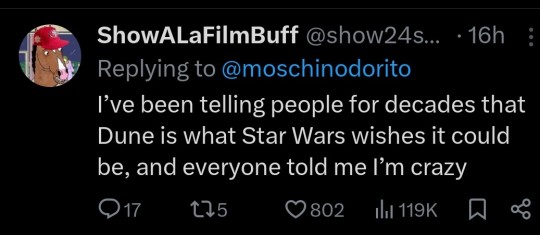
#twitter#dune#star wars#they’re not comparable#Nine Movies designed for mass consuption or a niche and hyper detailed book that just do happened to become a seminole work?#And there is so much more beyond the movies#largely cause they got multiple authors#it ainr frank building it by scratch but a proffessional team of aurhors and worldbuilders#Things can exist without being copies/rip offs#what you’re looking for is:#Valerian and Laurekine#flash gordon#lotr#the BIBLE#Paul doesnt get a heroes journey#Lucas adapted the heroes journey literally for his main plot#Leto II =\= Luke
3K notes
·
View notes
Text
When You're Up A Tree
The cousin community is always an enjoyable experience. When they were here recently, we did a few field trips to entertain them and the adults, which didn’t require money or a long car ride. Just a willingness to be outside and explore. Tree climbing has been a favored activity since I was a kid. My grandmother had a particularly grand tree for climbing at her home in Bowie, Texas, and it was a…
#Bible#Christianity#climbing trees#Dayle Rogers#faith#Fort Chistmas#Fort Christmas#Garden of Eden#God#Jesus#love#Second Seminole War#Tip of My Iceberg#tree of the knowledge of good and evil#trees#When You&039;re Up A Tree
0 notes
Text
The Second Seminole War, incidentally, was the Vietnam equivalent for the US military in the 19th Century:
The Second Seminole War is the true forgotten long war in American military history, the 19th Century equivalent of the Vietnam War. It was a war fought against the largest US communities of Maroons, and as an extension of the Jacksonian Trail of Tears. It was fought by the 19th Century Army, the one that would in the wake of this war go on to much greater relative success in the 1846-8 war, where multiple generals that distinguished themselves in other wars fumbled around much like the Vietnam War generals did for the same reasons.
They were asked to solve a predominantly political problem by military means poorly suited to it, had no idea of the location or nature of the enemy they fought, and were incapable of admitting why their enemies were actually fighting the war. Unlike Vietnam Florida was a part of the US, officially, so there was no lack of will to ensure the nominal territory became actual in the way there was to spend the money and bleed to keep the Mekong Delta run by a kleptocracy.
Thus the US 'won' the war and was able to deport a significant portion of the Seminoles as well as to re-enslave the Maroons of Florida.....and then it had to fight one more war after this one, if a somewhat shorter war, to finish the 'victory' it declared here because it turned out the victory was rather less complete than the reports made it out to be.
#lightdancer comments on history#black history month#military history#second seminole war#jacksonian era
1 note
·
View note
Text
The Rafah invasion is happening on the same day as the Met Gala (today)
The previous Rafah invasion took place during the Super Bowl (another major American cultural event)
Yet people have the audacity to say this isn’t a weapon of mass distraction aiming to yet again cover up Israel’s atrocious war crimes
PS: this is all happening even AFTER Hamas agreed to a ceasefire deal WHICH ISRAEL REJECTED because they want to continue murdering MILLIONS of civilians
This is what the Americans did to the natives in Seminole, what the British did in 1857. This is the final act in a mass ethnic cleansing, and your governments and medias are trying to COVER IT ALL UP
Free Palestine 🇵🇸 All Eyes On Rafah ‼️❤️🩹
#haya: talks politics & religion#hayatheauthor#haya: important#stand with palestine#free palestine#all eyes on rafah#save rafah#free rafah#rafah under attack#keep eyes on rafah#israel#from the river to the sea palestine will be free#palestine#free gaza#gaza genocide#gazaunderattack#news on gaza#met gala#met gala 2024
326 notes
·
View notes
Photo


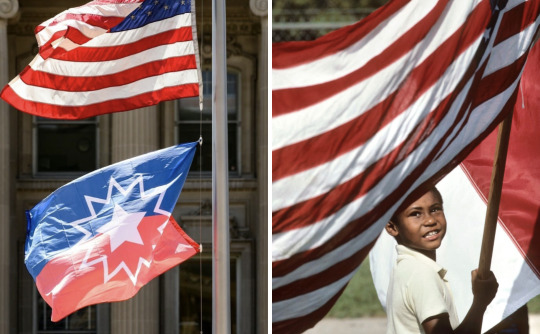


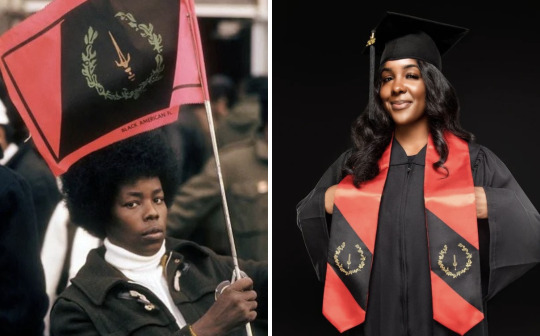
Juneteenth is a Black American holiday.
We call Juneteenth many things: Black Independence Day, Freedom Day, Emancipation Day, Jubilee Day. We celebrate and honor our ancestors.
December 31 is recognized as Watch Night or Freedom’s Eve in Black American churches because it marks the day our enslaved ancestors were awaiting news of their freedom going into 1863. On January 1, 1863, President Lincoln issued the Emancipation Proclamation. But all of the ancestors wouldn’t be freed until June 19, 1865 for those in Galveston, Texas and even January 23, 1866 for those in New Jersey (the last slave state). (It’s also worth noting that our people under the Choctaw and Chickasaw Nations wouldn’t be freed until April 28, 1866 and June 14, 1866 for those under the Cherokee Nation by way of the Treaties.)
Since 1866, Black Americans in Texas have been commemorating the emancipation of our people by way of reading the Emancipation Proclamation and coming together to have parades, free festivities, and later on pageants. Thereafter, it spread to select states as an annual day of commemoration of our people in our homeland.
Here’s a short silent video filmed during the 1925 Juneteenth celebration in Beaumont, Texas:
youtube
(It’s also worth noting that the Mascogos tribe in Coahuila, Mexico celebrate Juneteenth over there as well. Quick history lesson: A total of 305,326 Africans were shipped to the US to be enslaved alongside of American Indians who were already or would become enslaved as prisoners of war, as well as those who stayed behind refusing to leave and walk the Trail of Tears to Oklahoma. In the United States, you were either enslaved under the English territories, the Dutch, the French, the Spanish, or under the Nations of what would called the Five “Civilized” Native American Tribes: Cherokee, Creek (Muscogee), Chickasaw, Choctaw, and Seminoles. Mascogos descend from the Seminoles who escaped slavery during the Seminole Wars, or the Gullah Wars that lasted for more than 100 years if you will, and then settled at El Nacimiento in 1852.)
We largely wave our red, white and blue flags on Juneteenth. These are the only colors that represent Juneteenth. But sometimes you may see others wave our Black American Heritage flag (red, black, and gold).
Juneteenth is a day of respect. It has nothing to do with Africa, diversity, inclusion, immigration, your Pan-African flag, your cashapps, nor your commerce businesses. It is not a day of “what about” isms. It is not a day to tap into your inner colonizer and attempt to wipe out our existence. That is ethnocide and anti-Black American. If you can’t attend a Black American (centered) event that’s filled with education on the day, our music, our food and other centered activities because it’s not centered around yours…that is a you problem. Respect our day for what and whom it stands for in our homeland.
Juneteenth flag creator: “Boston Ben” Haith
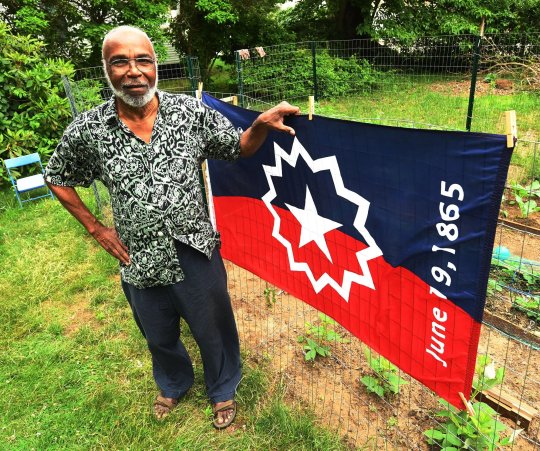
It was created in 1997. The red, white and blue colors represent the American flag. The five-point star represents the Lone State (Texas). The white burst around the star represents a nova, the beginning of a new star. The new beginning for Black Americans.
Black American Heritage Flag creators: Melvin Charles & Gleason T. Jackson

It was created in 1967, our Civil Rights era. The color black represents the ethnic pride for who we are. Red represents the blood shed for freedom, equality, justice and human dignity. Gold fig wreath represents intellect, prosperity, and peace. The sword represents the strength and authority exhibited by a Black culture that made many contributions to the world in mathematics, art, medicine, and physical science, heralding the contributions that Black Americans would make in these and other fields.

SN: While we’re talking about flags, I should note that Grace Wisher, a 13-year-old free Black girl from Baltimore helped stitched the Star Spangled flag, which would inspire the national anthem during her six years of service to Mary Pickersgill. I ain’t even gon hold you. I never looked too far into it, but she prob sewed that whole American flag her damn self. They love lying about history here until you start unearthing them old documents.
In conclusion, Juneteenth is a Black American holiday. Respect us and our ancestors.
#juneteenth#juneteenth flag#black american history#black american culture#ben haith#black american heritage flag#melvin charles#gleason t jackson#grace wisher#american flag#mascogos#juneteenth 2023
1K notes
·
View notes
Text
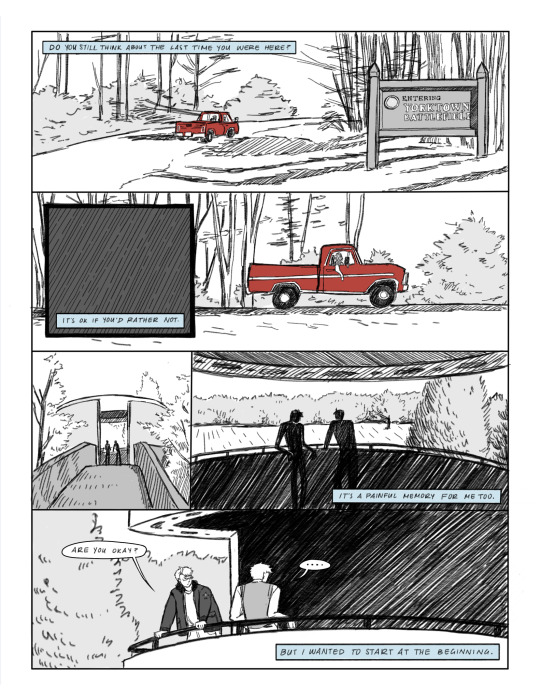




do you wanna see the west with me?
Notes below!
This is not a realistic road trip at all, but here are the places/activities shown:
Yorktown Battlefield, Virginia: the site where General Cornwallis surrendered in 1781, bringing the end of the Revolutionary War
Liberty Bell, Philadelphia, Pennsylvania: the famous bell with the message "Proclaim Liberty Throughout All the Land Unto All the Inhabitants thereof", and later a symbol of liberty for abolitionists and suffragists
Drive-in theater: outdoor cinemas that reached their peak in popularity in the 1950s to 60s; the film is The Searchers (1956)
Kayaking: a fun lake/ocean activity
Trail of Tears National Historic Trail: this trail crosses nine states and follows the forced displacement of Cherokees, Chickasaws, Choctaws, Muscogees, and Seminoles due to the Indian Removal Act in 1830
Traffic (and billboards): a bane to many and common in car-dependent cities
Cedar Hill Cemetery, Vicksburg, Mississippi: one of the oldest cemeteries in the US still being used; predates the Civil War and includes a Confederate burial site
Devil's Tower, Wyoming: a majestic (and sacred) butte and the first US national monument
Bonneville Salt Flats, Utah: a flat, empty salt pan estimated to hold 147 million tons of salt and a popular racing site
Old Faithful, Yellowstone National Park, Wyoming: a geyser in the world's first national park known for its reliable eruptions
Gas station, Nowhere, USA
Horseback riding, Montana: no comment, just a fun time
Las Vegas, Nevada: the world renowned Sin City, a place that caters to many vices
Stanley R. Mickelsen Safeguard Complex, North Dakota: group of missile defense facilities including missile silos and the pyramid-shaped radar system; built in 1975 and decommissioned after one day of operation, a "monument to man's fear and ignorance"
Hoover Dam, Nevada and Arizona: hydroelectric power plant on the Colorado River; the highest dam in the world at the time of its completion in 1935
Space Needle, Seattle, Washington: an observation tower with a revolving restaurant built for the 1962 World Fair "Living in the Space Age", a theme chosen to show the US was not lagging behind the USSR in the Space Race
Sequoia National Park, California: home of the world's largest tree by volume (General Sherman) and the highest point in the contiguous US (Mount Whitney)
Muir Beach Overlook, California: a former base station overlook with dugouts that gained importance immediately after the attack on Pearl Harbor in 1941 as a means to watch for attacks on nearby San Francisco
@usukweek
#usukweek#day 1#prompt: road trip#based on a fic i have yet to write….#usuk#hws america#aph america#alfred f jones#hws england#aph england#arthur kirkland#hetalia#hws
162 notes
·
View notes
Photo

Trail of Tears: Memorial and Protest of the Cherokee Nation by John Ross
The Trail of Tears was the forced relocation of the "Five Civilized Tribes" – Cherokee, Chickasaw, Choctaw, Muscogee Creek, and Seminole – from their ancestral lands in the Southeastern region of the United States to "Indian Territory" (modern-day Oklahoma) between 1831 and 1850, resulting in the deaths of over 16,000 Native Americans and the removal of over 60,000 from their homelands.
Trail of Tears Memorial at New Echota
Christopher James Culberson (Public Domain)
Scholar John Ehle writes, "the Trail of Tears – or, as the Indians more often said, the Trail Where They Wept – was a trail of sickness" (385). Most Native Americans died of disease, exposure, exhaustion, and starvation on the forced marches from their lands east of the Mississippi River (modern-day Alabama, Florida, Georgia, North Carolina, and Tennessee) to Indian Territory, a distance of between 1000 miles (1600 km) and over 5000 miles (8000 km), depending on where a given march began and the route taken.
The Trail of Tears was not a singular event but a series of forced relocations following the passage of the Indian Removal Act of 1830. The marches began the following year with the Choctaw nation and proceeding through 1847, ending in 1850:
Choctaw: 1831-1836
Seminole: 1832-1842
Muscogee Creek: 1834-1837
Chickasaw: 1837-1847
Cherokee: 1836-1838
Precisely where the term "Trail of Tears" originated is debated, but it is usually attributed to a Choctaw chief who described the journey as "a trail of tears and death." Scholar Adele Nozedar comments:
The originator of this simple phrase is not known for sure, but it is believed to have been used by a Choctaw chief, Nitikechi, to describe the effects of the Indian Removal Act. The Cherokee had a similar term: "The Place Where They Cried."
(500)
Cherokee Chief John Ross (l. 1790-1866) famously opposed the removal in his Memorial and Protest of the Cherokee Nation sent to Congress in June 1836, arguing that the US government had no legal grounds for relocating his people. Although his piece focuses on the Cherokee nation, the points he makes apply equally to the others who were forcibly removed from their lands.
Although the Trail of Tears is the best-known act of forced relocation of Native Americans, it is far from the only one as citizens of many other nations of Native peoples of North America experienced the same throughout the 19th century and up to as recently as the mid-1960s to the 1970s. This event, and others like it, notably the Long Walk of the Navajo (1863-1866) are, generally, understood today as acts of genocide perpetrated by the US government.
Background to the Marches
Although the Indian Removal Act of 1830 was the immediate cause for the death marches known as the Trail of Tears, the policies informing that act date back to the 1630s, notably the Pequot War (1636-1638), which reduced the Pequot population of the region of modern-day Massachusetts from 3000 to 200 (many then sold into slavery) to open up their lands for English colonization. Among the "facts submitted to a candid world" presented by Thomas Jefferson in the Declaration of Independence of 1776 was that King George III of Great Britain (r. 1760-1820)
Has excited domestic insurrections amongst us and has endeavored to bring on the inhabitants of our frontiers the merciless Indian Savages, whose known rule of warfare is an undistinguished destruction of all ages, sexes, and conditions.
As president, in 1803, Jefferson advocated the forced removal of Native Americans west of the Mississippi River and, by 1819, citizens of Native American nations were offered 640 acres of land in Indian Territory for giving up their lands east of the Mississippi. The US government in 1819 had no authority to grant these acres to anyone, however, as they were in so-called "Indian Territory" and, as John Ross points out below, the US government had no legal right to forcibly remove Native Americans from their homelands for relocation in the west.
Westward Exploration and Settlement of the United States c.1850
Simeon Netchev (CC BY-NC-ND)
The solution to the "Indian Problem", included in the Indian Removal Act of 1830, was to buy the land from Native Americans, and then, having nowhere to live, they might be amenable to moving west on their own, which the US government promised to help them do. Although the cause of the Trail of Tears is often attributed to the Georgia Gold Rush of 1829, which brought miners into conflict with Native Americans living there, President Andrew Jackson already had Native American relocation as a priority when he took office that year.
Continue reading...
38 notes
·
View notes
Text
is anyone here Seminole from the South East region of the US? i am Gullah Geechee and our people have a tied history.
for example we fought a war against white settler colonialists as allies in the Gullah Wars that took place in South Carolina and Florida (you may know the Florida half of it as the "SeminoleWars")
more here: https://twitter.com/geecheesociali1/status/1254956622062989317
my friend wrote it. it is unfortuneatly on twitter so you would need an account.
there is not a lot of free information available on it from the Gullah pov ime.
i am curious about any shared characteristics or practices we have. i am from South Carolina and so is 3/4ths of my family, and the other 1/4 of my family is from from Florida. i don't know them too well due to deaths, but they look like me and also integrate spanish among other things. we (Gullah and Seminole) people had a settlement in (”Spanish”) Florida. we have intermixed but idk how to feel totally because some of us were kept as slaves by the Seminole. we have mixed history, good and bad. let’s chat and build/mend a bridge :) i've never done any DNA testing, but that's not what I am after here. I just would like to have a cultural exchange, and listen to your history of the events etc. build some bridges in respect to our those of our ancestors who built bridges too. also, my Floridian Descendent of Slavery, Gullah sounding, Spanish patois speaking, family is a little lost to me. if this is you, or you know more, i'd love to be a little less lcultually separated in that regard.
#Seminole#gullah geechee#Indigenous#Black Seminole#Seminole Wars#Florida#i get white people often claim to be indigenous but i think this is different for a lot of reasons#all links that aren't twitter go to mastodon
5 notes
·
View notes
Text

Fort Lauderdale, Florida, United States: Fort Lauderdale is a coastal city located in the U.S. state of Florida, 30 miles north of Miami along the Atlantic Ocean. It is the county seat of and most populous city in Broward County in Florida. Built in 1838 and first incorporated in 1911, Fort Lauderdale is named after a series of forts built by the United States during the Second Seminole War. The forts took their name from Major William Lauderdale. Wikipedia
92 notes
·
View notes
Text
Fort Lauderdale, Florida, United States: Fort Lauderdale is a coastal city located in the U.S. state of Florida, 30 miles north of Miami along the Atlantic Ocean. It is the county seat of and most populous city in Broward County in Florida. Built in 1838 and first incorporated in 1911, Fort Lauderdale is named after a series of forts built by the United States during the Second Seminole War. The forts took their name from Major William Lauderdale. Wikipedia
69 notes
·
View notes
Text
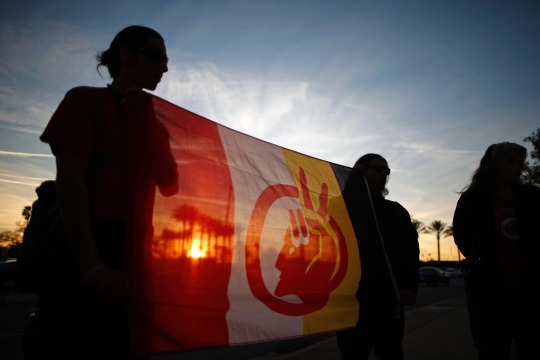
Native American and First Nations Flag Wars: Round 1
This tournament focuses on the flags of indigenous groups of the United States and Canada in honor of National American Indian Heritage Month. Thank you to everyone for your submissions! I think this is going to be a fun tournament with some great flags!
Round 1:
1. Huu-ay-aht First Nations vs. Miccosukee vs. Mashantucket Pequot Tribe vs. Teslin Tlingit Council
2. Nez Perce vs. Pimicikamak Cree Nation vs. United Keetoowah Band of Cherokee Indians vs. Cahto
3. Anishinaabe vs. Clatsop vs. Métis vs. Upper Skagit Indian Tribe of Washington
4. Cherokee Peace Flag vs. Peguis First Nation vs. Haisla vs. Chief of the Secwépemc
5. Jatibonicu Taino Tribal Nation vs. Missisquoi Abenaki Tribe vs. Colorado River Indian Tribes vs. Nisga'a
6. Chinook Nation vs. Hopi Nation vs. Mi'kmaq (horizontal) vs. Pawnee Nation
7. Northern Cheyenne Indian Reservation vs. Ahtahkakoop Cree Nation vs. Cowasuck Band of the Pennacook-Abenaki People vs. Tłı̨chǫ
8. Inuvialuit vs. Seminole Tribe of Florida vs. Mohawk Warrior Society vs. Eel Ground First Nation
9. American Indian Movement vs. Navajo vs. Natchitoches Tribe of Louisiana
10. Secwépemc vs. Pine Ridge Indian Reservation vs. Arctic Athabaskan Council
11. Tahltan Nation vs. Blackfeet Nation vs. Musqueam
12. Santa Ynez Band of Chumash Mission Indians vs. Haudenosaunee/Iroquois vs. Poarch Band of Creek Indians
13. Haida vs. Piapot First Nation vs. Ninilchik
14. Inuit Tapiriit Kanatami vs. Kitchenuhmaykoosib Inninuwug First Nation vs. Arapaho
15. Mi'kmaq Nation vs. Lax Kw'alaams Band vs. Pascua Yaqui Tribe
16. Cherokee vs. Ute Indian Tribe vs. Robinson Rancheria of Pomo Indians of California
#flags#vexillology#native american and first nations flag wars#tournament#brackets#native american#first nations
24 notes
·
View notes
Text
Lessons in Manliness from Bass Reeves _________________
It’s Never Too Late for a Man to Have a Second Act
Bass Reeves was born a slave in Arkansas in 1838. When the Civil War broke out, his white master joined the Confederate Army and took Reeves along to serve as his body servant. Reeves bided his time, until one night he saw an opening, laid out his master with his mighty fists, and took off for the hills a free man. He was taken in by the Keetoowah, an abolitionist sect of the Cherokee Nation.
When the war was over, he struck out on his own and settled with his family in Van Buren, Arkansas, making a good living as a farmer and horse breeder. He was the first black man to settle in Van Buren, and he built his family an eight room house with his own hands.
He started making some extra money by helping the U.S. Marshals with scouting and tracking and soon earned a reputation for himself as a man who knew what he was doing and could be relied upon.
He was commissioned as a Deputy U.S. Marshal in his own right in 1875, when he was 38 years old. During this time marshals were paid for the number of criminals brought in and the distance traveled in capturing them and bringing them back to court. With so many miles to cover in Indian Territory, and with his legendary effectiveness for tracking down wrong-doers, Reeves made a great living at his job. And so it was only as he was nearing 40 that he found his true calling.
Compensate for Weaknesses by Cultivating Signature Strengths
“My mom always said she heard that Bass was so tough he could spit on a brick and bust it in two!” -Willabelle Shultz, granddaughter of fellow marshal
Because he grew up a slave, Bass Reeves did not know how to read or write. Being an illiterate U.S. Marshal was highly unusual—the men needed to fill out forms and reports–but Bass got and kept his job by compensating for this weakness with other valuable strengths.
First, he could speak the Muskogee language of the Creeks and Seminoles, and he could also converse pretty well in the languages of the other Five Civilized Tribes. He took the time to get to know the tribes and their customs, and they respected him for it. His friendly and sterling reputation among Indians, blacks, and whites alike led folks to trust him and give him assistance and tips they didn’t feel comfortable sharing with other marshals.
Reeves knew Indian Territory like the back of his hand, and his scouting and tracking skills were second to none.
But his most notable strength was his prowess with firearms. He carried two big .45 caliber six-shooters and wore them with their handles facing forward. He employed the cross-handed draw, as he believed it was the fastest way for a man to grab his guns. And indeed, he was known as a man who could draw with lightning fast speed; numerous men tried to beat him, and 14 of them died in the attempt.
But unlike what you see in movies, cowboys in the West did not rely on their pistols; those were their back-up firearms. A cowboy’s weapon of choice was his trusty Winchester rifle, and that was the gun Reeves used most. But he was a proficient marksman with both weapons. Ambidextrous and always cool under pressure, Reeves could fire an accurate shot with pistol or rifle, with his left hand or his right. It was said he could draw “a bead as fine as a spider’s web on a frosty morning” and “shoot the left hind leg off of a contended fly sitting on a mule’s ear at a hundred yards and never ruffle a hair.”
Turkey shoot competitions were popular at territorial fairs and picnics, but Reeves was banned from entering them because he was too darn good. Once, when he saw 6 wolves tearing at a steer, he took them all out with just 8 shots from the back of a galloping horse.
The Mind Is Just as Powerful a Weapon as the Gun
“If Reeves were fictional, he would be a combination of Sherlock Holmes, Superman, and the Lone Ranger.” -Historian Art Burton
Despite Bass’ legendary strength and prowess with firearms, he didn’t simply go after criminals with guns and fists blazing. Rather, he took a far slower, methodical, and ultimately more effective approach. He was an intuitive and quick-thinking detective who often got his man from being smart and crafty.
Reeves was a master of disguise, a tactic he used to sneak up on unsuspecting outlaws. They would undoubtedly see a giant black man on a giant horse coming for them, so when Bass was closing in on a man, he would switch to a smaller ride, and he learned tricks from the Indians on how to look smaller in the saddle.
And often he would ditch the horse all together. For example, one time he dressed like a farmer and lumbered along in a ramshackle wagon pulled by old oxen. He drove the wagon close to a cabin where six outlaws where holed up, and as he passed their hide out, he pretended to get the wagon snagged on a large tree stump. When the outlaws came out to help this humble farmer, he coolly reached into his overalls, drew out his six-shooters, and placed the men under arrest.
On another occasion, Reeves was after two outlaws who were hiding out at their mother’s house. Reeves camped 28 miles away to be sure they didn’t see him coming or hear he was in the area. Then he ditched his marshal duds and stashed his handcuffs and six-shooters under a set of dirty, baggy clothes, flat shoes, and a large floppy hat into which he shot three bullet holes. Dressed like a typical tramp, Reeves sauntered up to the felons’ hideout and asked for something to eat, showing them his bullet-ridden hat and explaining how he had been shot at by marshals and was famished from having walked for miles to flee the law. Having ingratiated himself as a fellow outlaw, the men ate together and decided to join forces on a future heist. After everyone had fallen asleep for the night, Reeves crept up to the two outlaws and handcuffed them in their sleep, careful not to wake them. In the morning, Reeves bounded into the room and woke them up with his booming voice, “Come on, boys, let’s get going from here!” As the men tried to get out bed, they quickly realized they’d been had by crafty old Bass Reeves.
Be Reliable–The Details Matter
Even though he was a tough-as-nails badass, locals also remembered Reeves as a man known for his “politeness and courteous manner” and as someone who was “kind,” “sympathetic,” and “always neatly dressed.” He was also a man who took pride in getting the details right.
Reeves was unable to read or write and yet part of his job was to write up reports on his arrests and serve subpoenas to witnesses. So when he had to write a report, he would dictate to someone else and sign with an “X.” When he would get a stack of subpoenas to serve to different people, he would memorize the names like symbols and have people read the subpoenas out loud to him until he memorized what symbol went with what subpoena.
He took great pride in the fact that he never once served the wrong subpoena to the wrong person. In fact, many of the courts specially requested that their subpoenas be served by Reeves because he was so reliable.
Keep Cool. Always.
“Reeves was never known to show the slightest excitement under any circumstance. He does not know what fear is. Place a warrant for arrest in his hands and no circumstance can cause him to deviate. ” –Oklahoma City Weekly Times-Journal, 1907
Bass Reeves had an uncanny ability to stay calm and cool, even when he was in a really tight spot.
He found himself in that kind of tight spot while looking to arrest a murderer, Jim Webb, who was hanging out with posseman Floyd Smith at a ranch house. Reeves and his partner moseyed up, tried to pull the old, “we’re just regular cowboys passing through” trick, and sat down to get some breakfast. But the two men weren’t buying it and sat glaring at the marshals, pistols at the ready in their hands. An hour went by and Reeves and his partner still didn’t have an opening to make a move on the outlaws. But when Webb was momentarily distracted by a noise outside, Reeves jumped up, wrapped his large hand around Webb’s throat, and shoved his Colt .45 in the surprised man’s face. Webb meekly surrendered. Reeves’ partner was supposed to jump in and grab Smith, but he froze. Smith fired two shots at Reeves; he dodged them both, and with his hand still around Webb’s neck, he turned and took Smith out with one shot. Then he ordered his partner to handcuff Webb and called it a day.
Reeves was the target of numerous assassination attempts but he often saved his own neck by staying completely calm and in control. One time, he met two men out riding who knew who he was and wanted him dead. They drew their guns and forced him off his horse. One of the men asked if Reeves had any last words, and Bass answered that he would really appreciate it if one of them could read him a letter from his wife before finishing him off. He reached into his saddlebag for the letter and handed it over. As soon as the would-be-assassin reached for the letter, Bass put one of his hands around the man’s throat, used his other hand to draw his gun, and said, “Son of a bitch, now you’re under arrest!” The outlaw’s partner was so surprised he dropped his gun, and Reeves put both men in chains.
Another time, Reeves faced a similar situation; this time three wanted outlaws forced him from his horse and were about to do him in. He showed them the warrants he had for their arrest and asked them for the date, so he could jot it down for his records when he turned the men into jail. The leader of the group laughed and said,“You are ready to turn in now.” But having dropped his guard for just a second, Reeves drew his six-shooter as fast as lightning and grabbed the barrel of the man’s gun. The outlaw fired three times, but Reeves again dodged the bullets. At the same time, and with his hand still around the barrel of the first man’s gun, he shot the second man, and then hit the third man over the head with his six-shooter, killing him. All in a day’s work for Deputy U.S. Marshal Bass Reeves.
Build a Bridge
When Reeves was appointed a marshal by Judge Parker, the judge reminded him that “he would be in a position to serve as a deputy to show the lawful as well as the lawless that a black man was the equal of any other law enforcement officer on the frontier.”
Bass took this responsibility seriously.
Black law enforcement officers were a rarity in other parts of the country, but more common in Indian Territory and surrounding states like Texas. In fact, despite Hollywood’s depiction of the Old West as lily white, 25% of cowboys in Texas were African-American.
Because of the reputation Bass earned as a marshal who was honest, effective, and doggedly persistent–the Chief Deputy U.S. Marshal of the Western District, Bud Ledbetter, called Bass, “one of the bravest men this country has ever known”–more black marshals were hired in Indian Territory; a couple dozen were part of the service during Bass’ tenure. Nowhere else in the country could a black man arrest a white man. Bass had paved the way, and done one of the manliest things a man can do—build a bridge and a legacy for others to follow.
Sadly, when Oklahoma became a state in 1907, it instituted Jim Crow laws that forced black marshals out of the service. Despite his legendary record as a deputy marshal, Reeves had to take a job as a municipal policeman in the town of Muskogee the year before he died. But his shining example of manhood cannot so easily be passed over and still speaks to us today.
28 notes
·
View notes